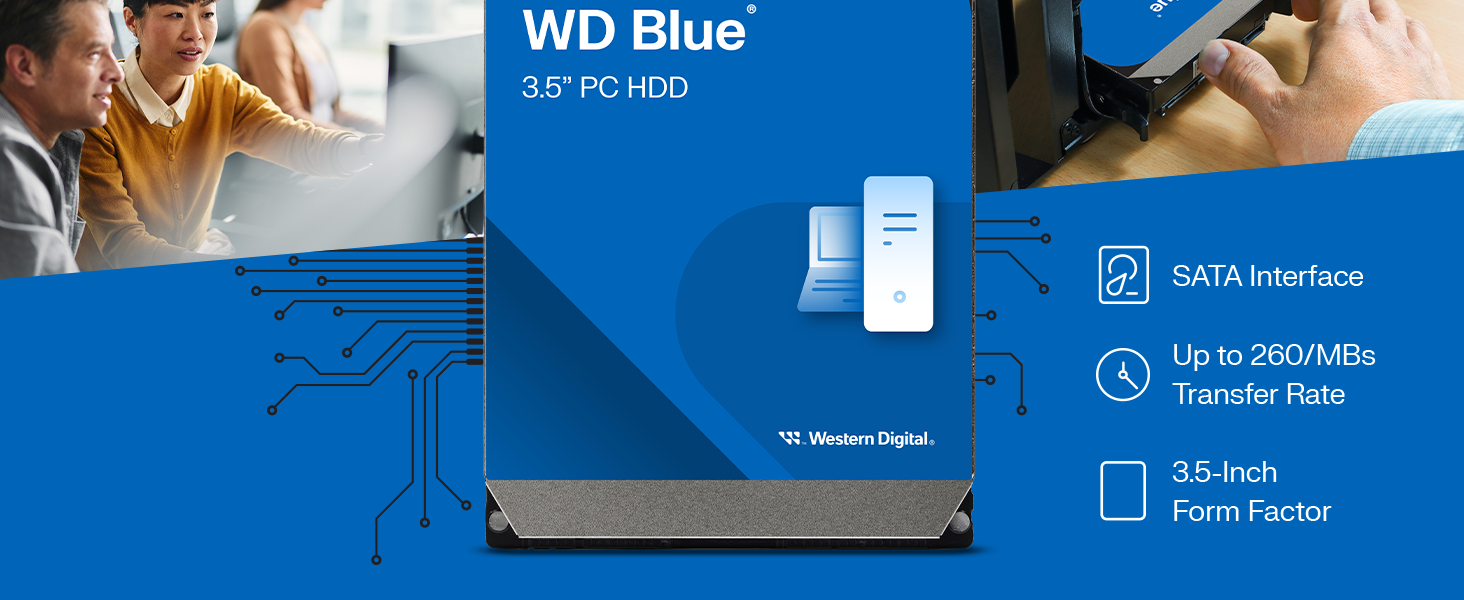Customer Services
Copyright © 2025 Desertcart Holdings Limited
Desert Online General Trading LLC
Dubai, United Arab Emirates








💡 Elevate Your Storage Game!
The Western Digital 8TB WD Blue PC Internal Hard Drive is designed for reliable everyday computing, featuring a robust 5640 RPM speed, SATA 6 Gb/s interface, and a generous 256 MB cache. With a capacity of up to 8TB, it’s perfect for storing large files and media. Plus, it comes with free Acronis True Image WD Edition cloning software and a 2-year limited warranty for added peace of mind.


| Hard Drive | 8 TB Mechanical Hard Disk |
| Brand | Western Digital |
| Series | WD Blue HDD |
| Item model number | WD80EAAZ |
| Item Weight | 1.65 pounds |
| Product Dimensions | 11.81 x 11.81 x 11.81 inches |
| Item Dimensions LxWxH | 11.81 x 11.81 x 11.81 inches |
| Color | Blue |
| Flash Memory Size | 8 TB |
| Hard Drive Interface | Serial ATA-600 |
| Hard Drive Rotational Speed | 5640 RPM |
| Power Source | No power source |
| Manufacturer | Western Digital Technologies, Inc. |
| Language | English |
| ASIN | B0CMQ8XBBR |
| Date First Available | November 22, 2023 |
Trustpilot
2 weeks ago
2 weeks ago